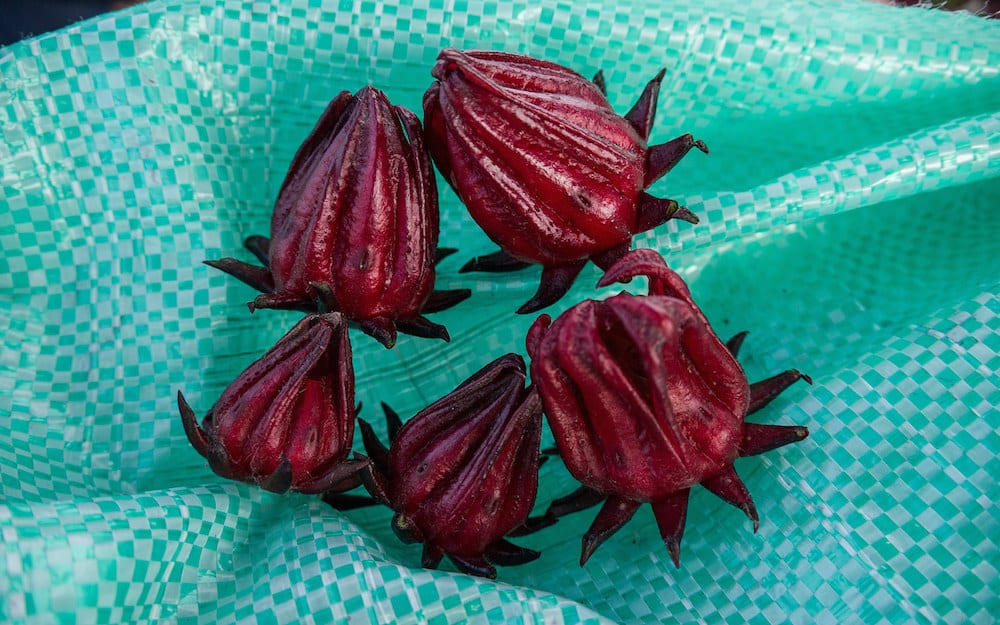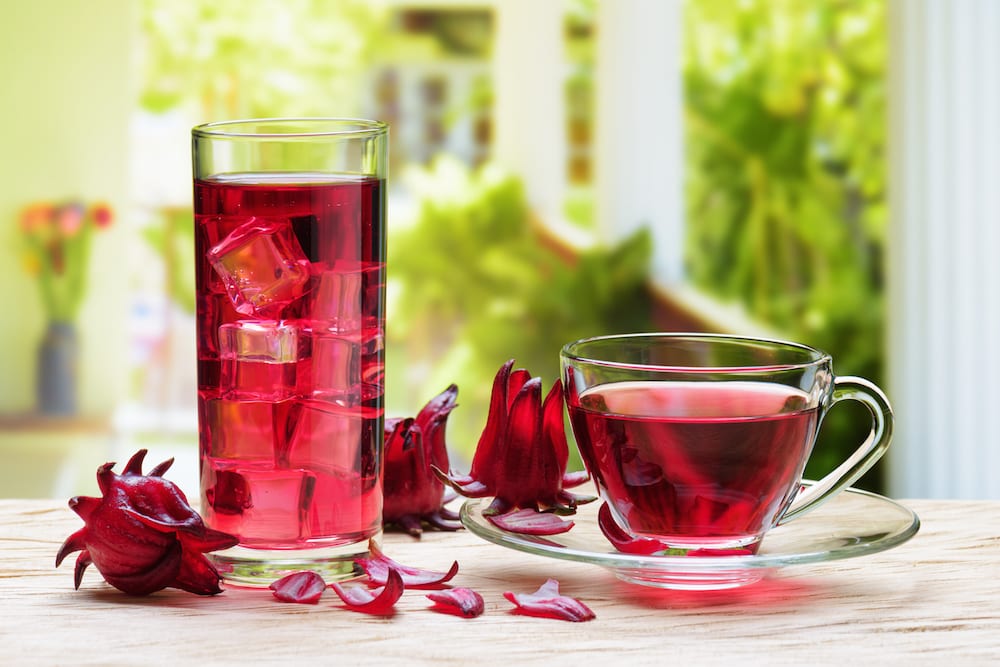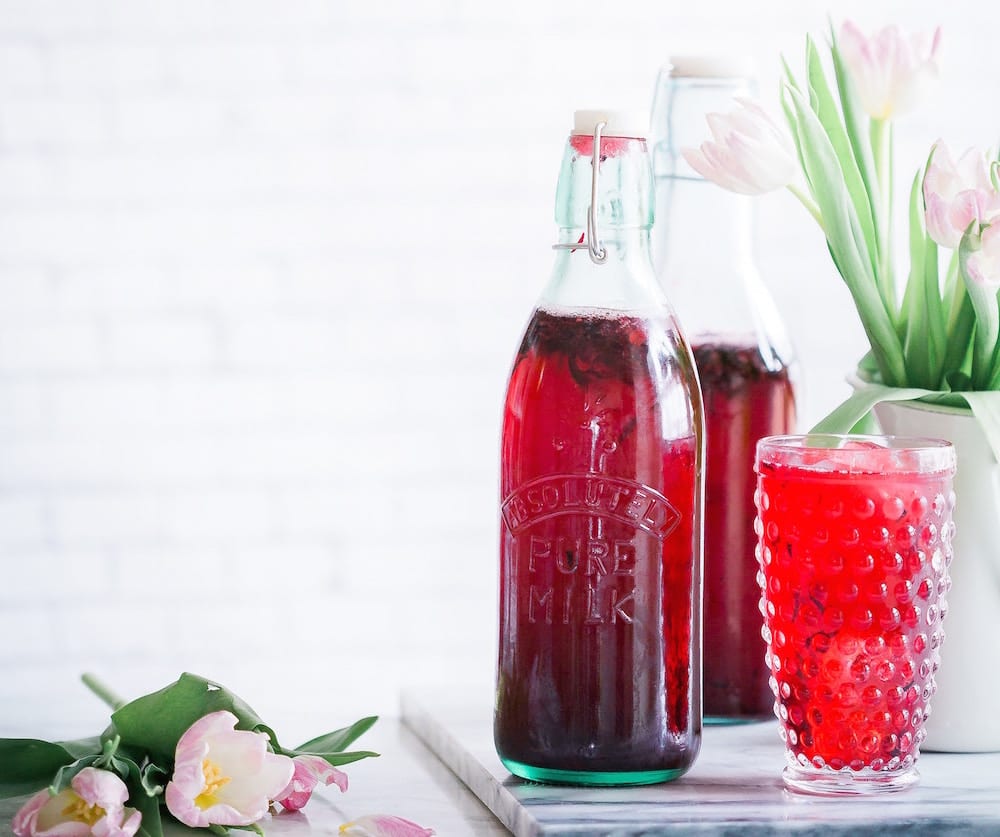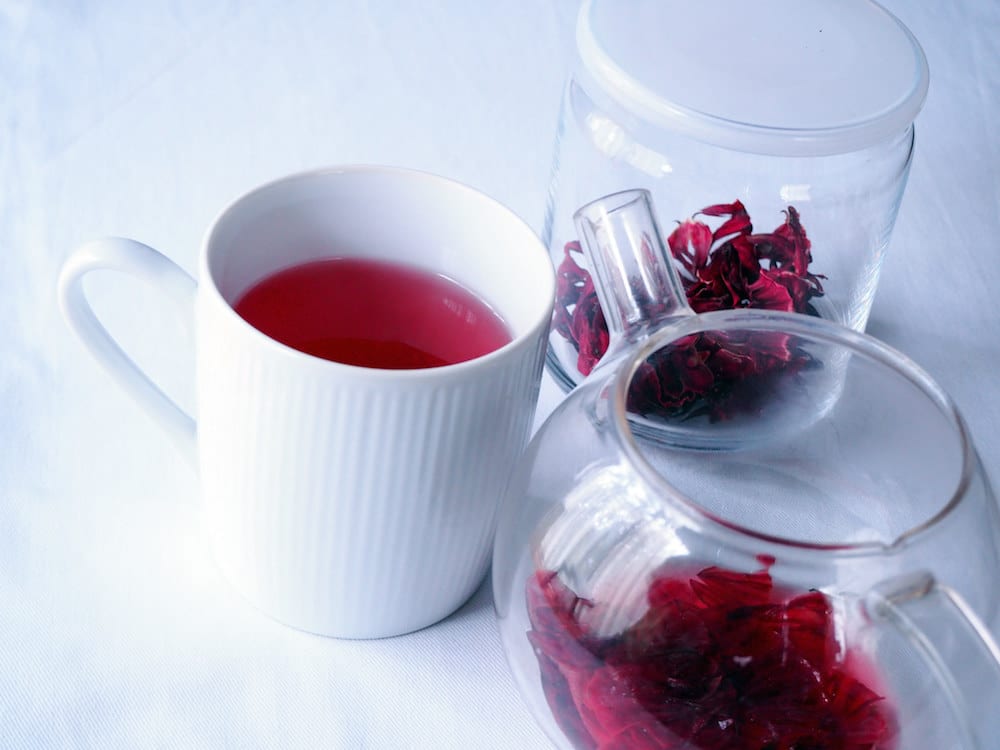Share this!
What Exactly is Bissap???
Bissap is a drink made from the species of the hibiscus flower known as the Roselle. The sepals of the hibiscus flower when infused in hot water leaves a pink, red, magenta or dark shade of water. It is scientifically named hibiscus sabdariffa. The sepals are also referred to as the Roselle fruit flower. It is important to note that it is the sepals or calyxes and not the petals of the flower that produces this versatile drink.
Names and Variations of Bissap
Although the names of the Bissap are inexhaustible, these are the most popular names for the Bissap all across the world; it is called sorrel in the Caribbean region covering Guyana, Barbados, Dominican Republic, Trinidad and Tobago, Belize and Jamaica referring to the petals of the flower, Belchanda in Nepal and Grosella in Paraguay. In the United States, it is called Jamaica, (pronounced ha-my-ka, the way Jose is pronounced ho-say). It is consumed as tea, sold in stores and supermarkets in packages or as tea bags.
In Africa, Nigerians call it Zobo, Ghanaians call it Sobolo while Senegalese, Congolese, Malians and Burkinabes call it Bissap and it is actually termed the national drink in Senegal. Agua de Flor de Jamaica or Agua de Jamaica as it is called in Mexico, Central and South America is usually served chilled. Karkade, its Arabic name, is highly valued enough to be used to toast wedding celebrations in Egypt and Sudan. It is enjoyed cold and heavily sweetened. In Jamaica it is usually drunk in the Christmas period, like a Christmas punch drink with rum and ginger is added to it. Knowing the different names of the Bissap drink will ensure continuous consumption of the drink regardless of the country or continent you may be, if you don’t call the right name, you may be rewarded with a blank stare when asking for the dried flower in the local markets.

Hibiscus sabdariffa is found in about 84 countries, but native to the tropical countries, particularly West Africa, because it thrives where there is plenty sunlight, it can grow in the cooler climates as well, but that will depend on the season or if it is in a controlled environment. It is susceptible to damage by frost and ice, but grows excels in humid and warm climates and as a result of this, the red calyxes have increasingly been exported to the United States and Europe. Water and fertilizer must be used in moderation for it to grow. The calyxes can be cut fresh, which is when it is easy to remove and dried before it can be used. Although almost every part of the plant is consumable (the seeds, fruits, leaves, stem, etc.) it is the calyxes that is used to make the Bissap drink.
The drink and Its Content
The Bissap drink is sour in its natural state, dark, and tinged with red. The shade of reds can change depending on the type of Roselle calyxes used, some are vibrant red in color, and others darker. Another factor that determines the color of the drink is the quantity of water used to make it, if more water is used, the drink becomes lighter becomes darker with less water.

Bissap is tasty and can be adapted to suit any palate, climate or taste. Although tart without any addition of other ingredients, it is very tolerable. Bissap is widely enjoyed as a cold drink that is because its calyxes is abundant in the tropics, but can be drunk hot as tea or just a hot drink when one is ill or feeling poorly. The common accompaniment to the Bissap drink is ginger, cayenne (for some heat), lemon, and lime. It can be flavored with mint, pineapple, strawberry, banana, orange, cinnamon, cloves, bay leaves, and even nutmeg. It can be sweetened with maple syrup, sugar, brown sugar, cane sugar, honey and other artificial sweeteners and is loaded with vital minerals and nutrients including: Vitamin C, Calcium, Niacin, Anthocyanins, Riboflavin and a group of compounds known Flavonoids which are responsible for the deep rich color and are rich in antioxidant which rids the body of toxins. It is very simple to make, boil dried calyxes to produce the red hued drink and add your preferred options (see link to recipe at the end of the article).
Health Benefits of Bissap
There are many supposed health benefits of this drink. Some have not been scientifically proven yet (such as the claim that it can make you sleep deeply when it is consumed in its tart, natural form). However, there are some health benefits that have passed the scientific test, and they include:

- Acts as a natural diuretic
- Anti-inflammatory and antibacterial properties
- Aids appetite
- Soothes cold
- Provides similar benefits as obtained in other antioxidant drinks
- Acts as a tonic for good kidney functioning
- Aids digestion
- Aids Urinary tract health
- Promotes cardiovascular health
- Strengthens the immune system
- Increases energy levels
- Helps reduce bad cholesterol and increase in the good cholesterol
- Reduces high blood pressure
- Can serve as a mild laxative
- Can prevent cancer and diabetes
- Can combat liver problems
- Improve skin condition
- Aids weight loss
- Relief from cramps and menstrual pains
Howbeit, it has been said to cause some unpleasant effects when it is consumed in some certain conditions:
Early pregnancy risk: it can cause a miscarriage because of its tendencies to induce menstruation, so expectant mothers in their first trimester should avoid consumption of Bissap.
Drug interactions: it can interact with drugs and can either increase or reduce the efficacy of some medications. Specifically, Acetaminophen (Tylenol), taking Bissap tea or juice before the use of this medication, may increase the rate at which the body gets rid of the medication
Medical risk: People already on anti-hypertensive medication or with low blood pressure condition should not take Bissap, as it significantly lowers blood pressure and dilates the blood vessels.
Hallucinogenic effects: Although this occurs rarely, it can impair concentration and induce hallucinogenic tendencies in some people.
The good, however, outweighs the bad tremendously, so get drinking.
Other Interesting uses of Bissap
- Bissap in its powdery form, can be used to tighten the skin pores, kind of like Botox
- As a toner for the skin to give a youthful glow
- To promotes moisture and shine for hair
- The leftover Roselle flower from the making of Bissap can be used for chutney or for soups.
- It can make great jam or preserves.
After all this information, here is a very simple recipe for making Bissap, you can tweak it to suit your preference, have fun with it.
[amazon_link asins=’B00ZDO4ZWC,B01N3NBFNM,B01KKJIKJ8,B0012BSDNW,B01B6GDQL6,B01KHU8OT6,B00LVR1X5W,B00E8BYA94′ template=’ProductCarousel’ store=’dawebsite2017-20′ marketplace=’US’ link_id=’6ef57ed7-c3ec-11e7-8b71-0b2d335d75b0′]




